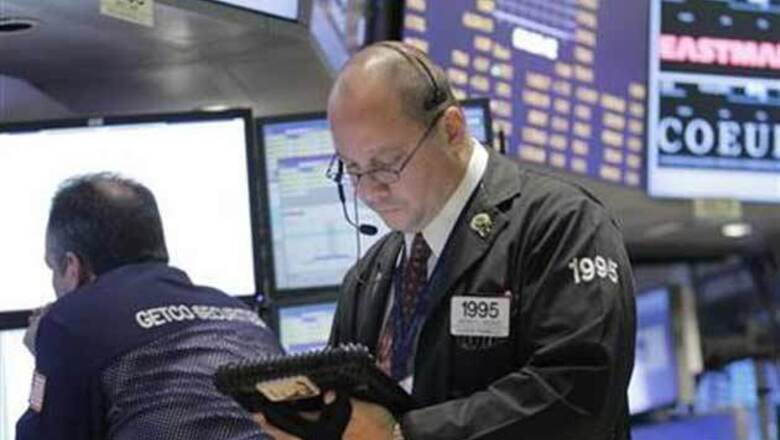
views
New York: A Washington-based filmmaker is taking a hard look at how the U.S. stock market evolved from a crowded, noisy trading space into a quiet one dominated by machines in her new film, 'Ghost Exchange.' The feature-length documentary film portrays the market as a system in need of serious repair, with flaws that could be costing the U.S. economy some 20 million jobs.
The film is being released amid growing attention to problems in the stock market. Investors have been pulling money out of stocks despite the major indexes approaching the highs before the 2008-09 global financial crisis.
Following the near collapse of market-making giant Knight Capital after a trading software glitch on August 1, the U.S. Securities and Exchange Commission held a roundtable on stock market technology. Meanwhile, the Commodity Futures Trading Commission is getting ready to consider a concept release with ideas for better regulation of electronic trading.
Day-to-day events in the stock market have kept attention focused on high frequency trading. On Wednesday, traders blamed the high-speed machines for a quick, sharp dip in the price of AT&T (T.N) shares following the company's earnings report. AT&T's stock fell from $34.50 to $33 and bounced back in just four seconds.
The creator of 'Ghost Exchange,' Camilla Sullivan, a documentarian and marketing professional who wrote and directed the film herself and produced it with her partner, Rob Lyall, said she hopes it will spur regulators and industry leaders to work together to repair the system.
"Are we taking care of and nurturing our capital markets or do we have the potential to lose something very important?" Sullivan said in an interview with Reuters.
"The market has evolved far more quickly than the regulators can regulate," she added. "We're not saying it's their fault. They barely have the skills or the technology or the resources to process the changes."
High frequency trading
For the film, Sullivan interviewed two of the most outspoken critics of high-frequency trading, Themis Trading co-founders Joe Saluzzi and Sal Arnuk. She also spoke with Direct Edge Chief Executive William O'Brien, Vanguard Group Chief Investment Officer George Sauter and Seth Merrin, the president and chief executive of Liquidnet Holdings.
"Everyone that we selected to interview for this film we believe are the type of industry leaders you would want," Sullivan said.
Sullivan said she is in talks with distributors to try to get 'Ghost Exchange' out to the public, and she has submitted the film to all of the major festivals.
A former corporate communications executive originally from Sydney, Sullivan moved to the United States and began making films in 2007. Through her production company, Arbitrage Pictures, she is also planning a documentary that focuses specifically on initial public offerings.
The drop in the number of IPOs is what Sullivan says is costing the U.S. economy millions of jobs. Citing expert research, Sullivan said small companies' inability to access the stock market in the current environment is preventing new hiring and making it impossible for companies to take bold risks.
In addition to the film company, Sullivan runs Visionista, a Washington-based video marketing company.
She said her interest in the U.S. stock market was driven by her background in finance. When the Dow Jones industrial average plunged 700 points in a matter of seconds on May 6, 2010 in what was later called the 'flash crash,' it grabbed her attention. High-frequency traders have been blamed for pulling out of the market when stock prices started to fall, accelerating the drop in prices.
"I didn't realize the majority of trades in the United States are executed by computer, and not just by computer but by algorithm. What's that doing to the structure and shape of capital markets?"
But 'Ghost Exchange' doesn't focus solely on high-frequency trading. It also deals with issues like order types, tick sizes, and the segmentation that has separated access to large-cap and small-cap stocks in recent years.
Sullivan has concluded that regulators and the industry need to work more closely with each other to fix individual problems. She also believes the SEC should add more market experts to its staff and beef up its presence in New York and Chicago, the centers of U.S. trading.
The SEC's new Office of Analytics and Research, which will focus on monitoring markets and analyzing trading data, is 'a good first step,' Sullivan said.
"I think it's good that they have the same technology on the outside that the industry has on the inside," she said.


















Comments
0 comment